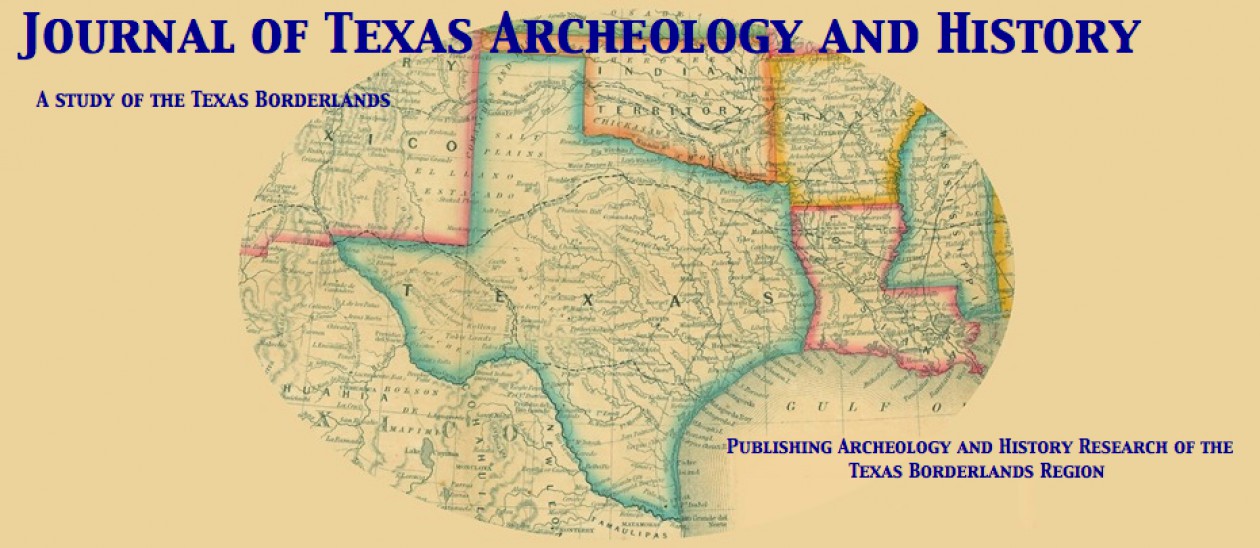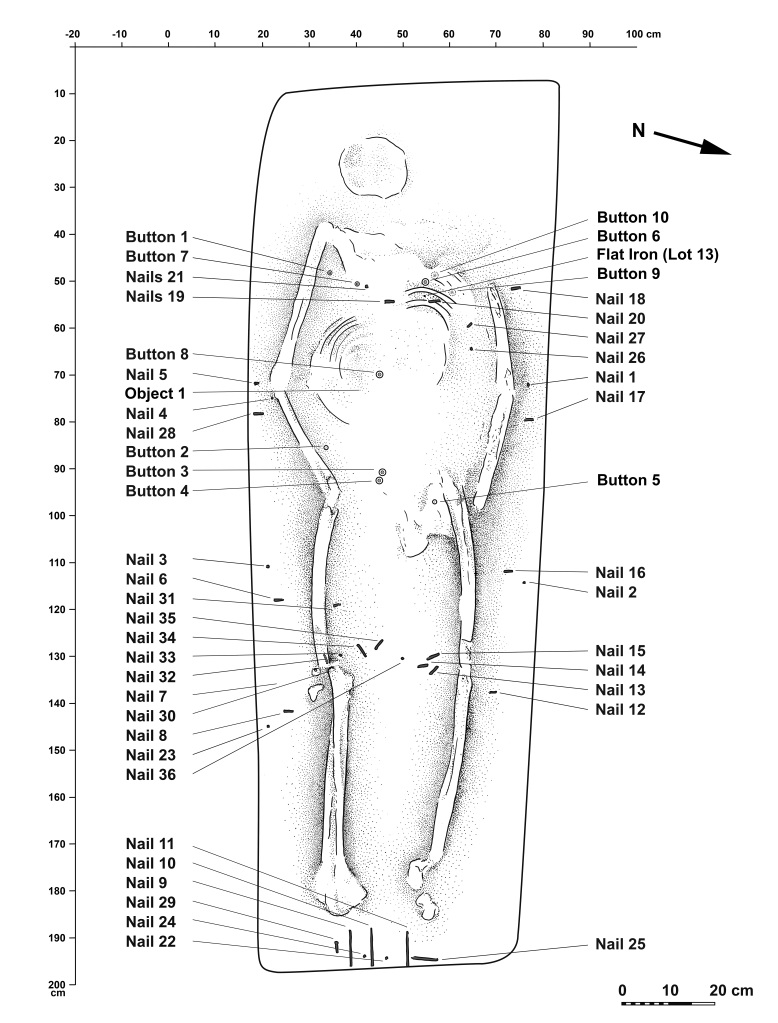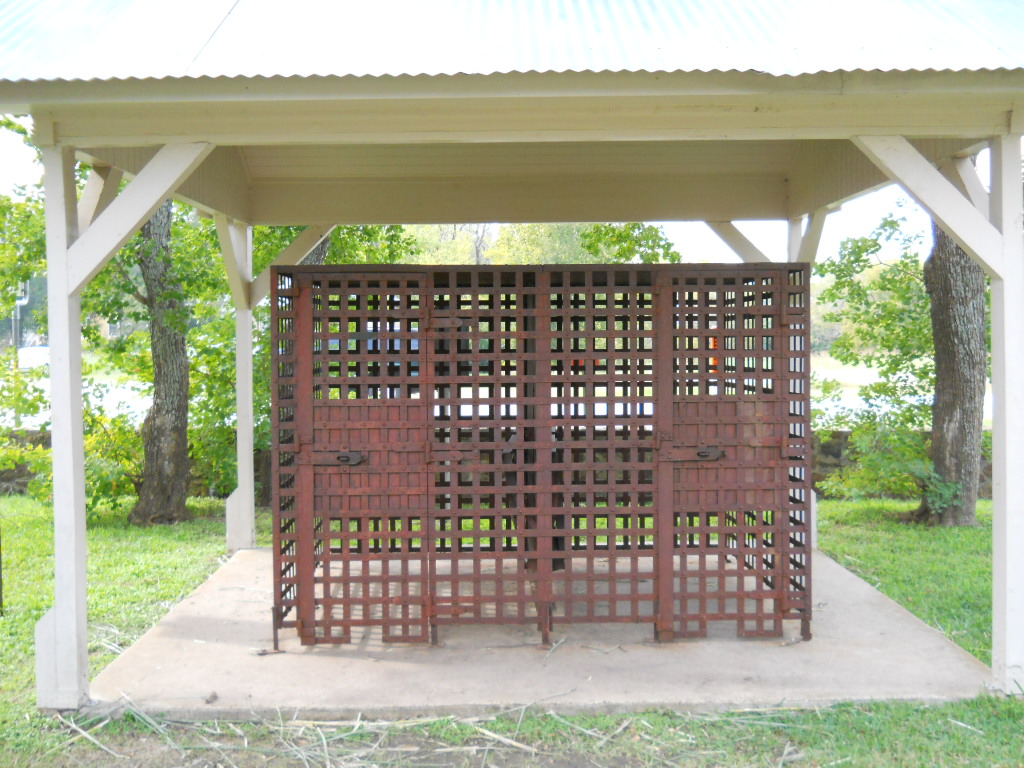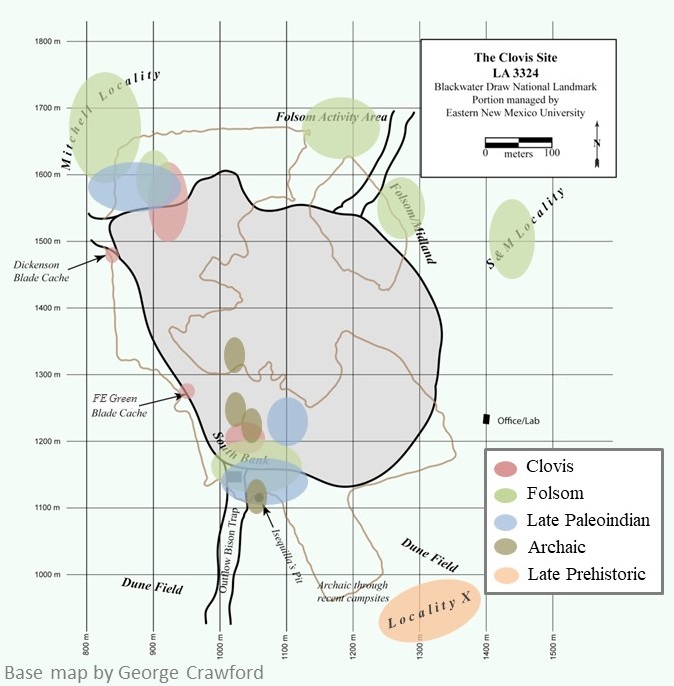Edited by Stephen L. Black, J. David Kilby, and Amanda M. Castañeda
Journal of Texas Archeology and History is extremely pleased to announce the publication of this very special collection of papers covering the research in Eagle Nest Canyon – The Archaeology of Eagle Nest Canyon, Texas: Papers in Honor of Jack and Wilmuth Skiles.
The 28 research papers in Journal of Texas Archeology and History Special Volume #6 summarize recent archaeological investigations in Eagle Nest Canyon in the Lower Pecos Canyonlands of southwestern Texas. It honors landowners and supporters, Jack and Wilmuth Skiles, their love of the land, and its rich human history. The well-illustrated volume highlights state-of-the-art research at Eagle Cave and Bonfire Shelter, the best-known of the canyon’s well-preserved rockshelters, as well as seven other sites representing an archaeological record spanning over 13,000 years.
The Eagle Nest Canyon (ENC) investigations were carried out by staff, professional collaborators, students, and volunteers under the auspices of the Ancient Southwest Texas Project (ASWT) and the Shumla Archaeological Research and Education Center, both at Texas State University (TXST). Most of the reported research was conducted during a decade-long span beginning in 2013. The volume consists of papers by the directors and professional collaborators involved in the projects, as well as papers that highlight the results of individual Master’s theses, doctoral work, and honors research carried out by students.
The volume is organized into six sections. Part One introduces the research setting and the Skiles’ relationship to the canyon’s archaeology. Other papers trace the history of research and the geoarchaeological context of the ENC prehistoric record to set the scene for the remainder of the volume.
Part Two contains five papers focused on the archaeology of Eagle Cave, an immense dry rockshelter containing a diverse and impressive record of prehistoric use and activity. While best known for its enormous Archaic-age earth oven facilities and rock art, ASWT encountered two previously undetected Paleoindian-age occupations.
Part Three focuses on research at Bonfire Shelter. The first paper provides an overview of the extensive deposits in this deep shelter, including “bone beds” containing bison and Pleistocene megafauna, and their varying interpretations. Three papers attempt to resolve some of the ambiguity and debate concerning the bone beds using a combination of new data and analyses of previous data.
Part Four presents six papers on other archaeological sites found within or overlooking ENC. Kelly Cave, Skiles Shelter, and Horse Trail Shelter are all rockshelters in the lower canyon and nearby Sayles Adobe is a deep terrace site. Langtry Rock Midden, Torres Ranch, and Lone Star Bridge are open-air sites found along the canyon rim.
Part Five includes nine papers that address canyon-wide or regional aspects of the archaeological record, ranging from rock art research, to specialized studies (e.g., zooarchaeology, paleobotany, radiocarbon dating), to collections-based research spanning from early prehistoric through the historic railroad record.
Part Six is a single paper that reflects on the results of ASWT work in ENC and gives an overview of data collection protocols and the amassed samples, along with an invitation for future collaborative research based on these samples.
The papers were collected, organized, and edited by three veterans of the ASWT Eagle Nest Canyon Project. Dr. Steve Black, Research Professor at TXST, directed ASWT from 2010-2019. Black’s research focuses on hunter-gatherers, and hot rock cooking. Dr. David Kilby, TXST Professor of Anthropology, became a co-Director of ASWT in 2018 and took over as Director in 2020. Kilby’s research focuses primarily on the earliest hunter-gatherers of western North America. Amanda Castañeda is a professional archaeologist who has worked in Texas, Wyoming, New Mexico, Colorado, Utah, and Montana. Her research interests include rock imagery and ground stone technology. She is the Assistant Director of the Center for Big Bend Studies at Sul Ross State University.
Copies of the volume or individual papers are available at www.JTAH.org, a free and open-access publishing venue. Full-color print copies in paperback and hard cover, plus Kindle Reader, are available at the Amazon.com online bookstore.
Additionally, each paper may be accessed individually by clicking on its title from the Table of Contents, below:
PART ONE – INTRODUCTION and SETTING
Introduction: Jack and Wilmuth Skiles and their Canyon by Stephen L. Black and J. Phil Dering
Eagle Nest Canyon Archaeological History by Stephen L. Black and J. David Kilby
PART TWO – EAGLE CAVE
On the Front Porch of Eagle Cave by Amanda M. Castañeda
PART THREE – BONFIRE SHELTER
Bonfire Shelter: A Zooarchaeological Reevaluation of Bone Bed 2 by James O. Ramsey
Geoarchaeological Approach to Resolving the Origins of Bison Bone Beds at Bonfire Shelter by Ashley Eyeington
PART FOUR – OTHER EAGLE NEST CANYON SITES
Jack’s Backyard: Earth Oven Features on the Edge of Eagle Nest Canyon by G. Matt Basham
2013-2014 Excavations of Kelley Cave by Daniel P. Rodriguez
Skiles Shelter Investigations: Age and Formation Processes by Bryan E. Heisinger
Quantifying Earth Oven Fire-Cracked Rock: A View from the Langtry Rock Midden by Zachary Jamieson
PART FIVE – CANYON-WIDE and BEYOND
History of Radiocarbon Dating in the Lower Pecos Canyonlands by Emily R. McCuistion
Landscape Change Modeling at Eagle Nest Canyon by Mark D. Willis
The Documentation, Conservation, and Exhibition of the Skiles Collection by Amy E. Reid
Zooarchaeological Research in the Western Lower Pecos Canyonlands by Christopher J. Jurgens
PART SIX – POSTSCRIPT












